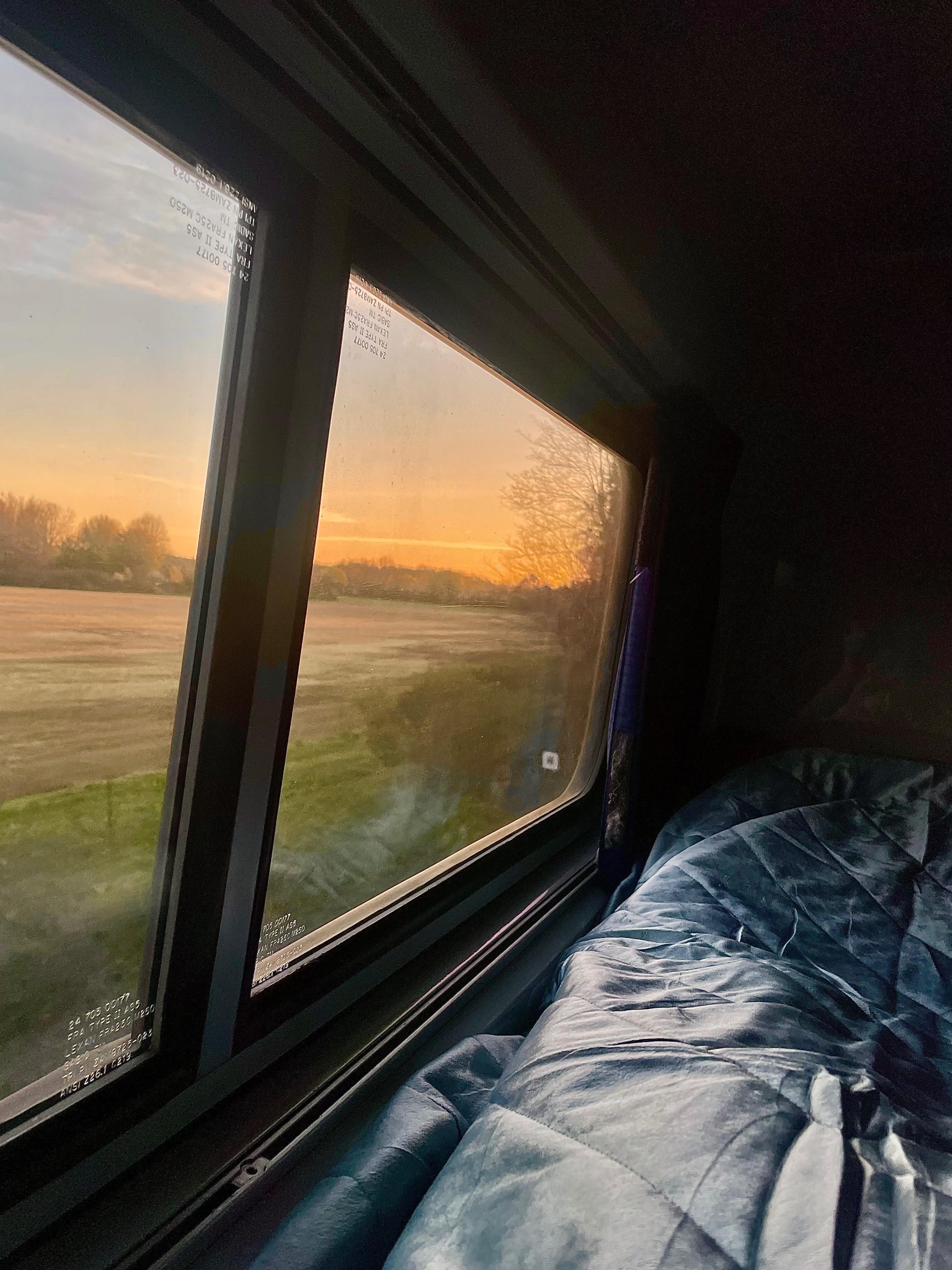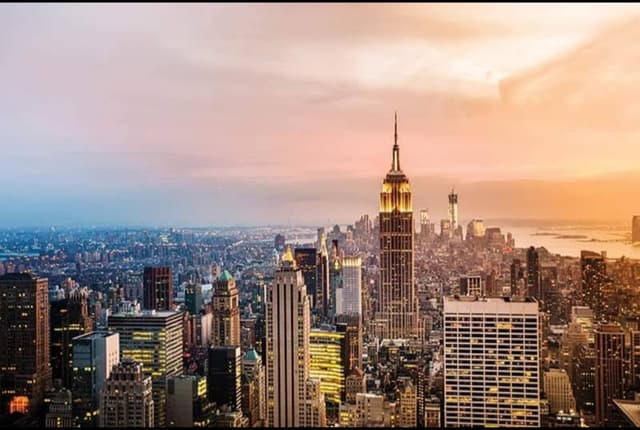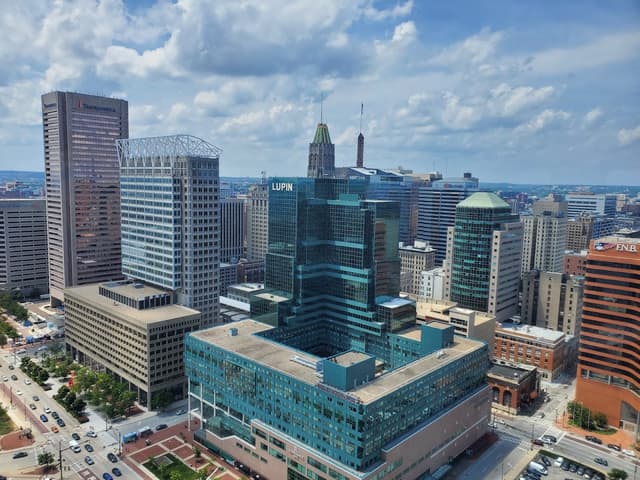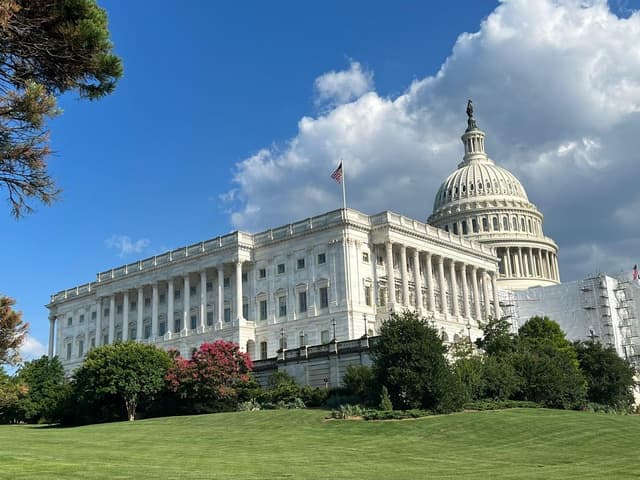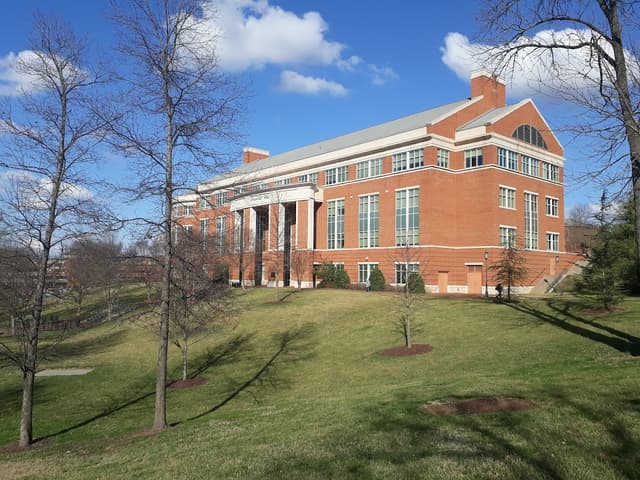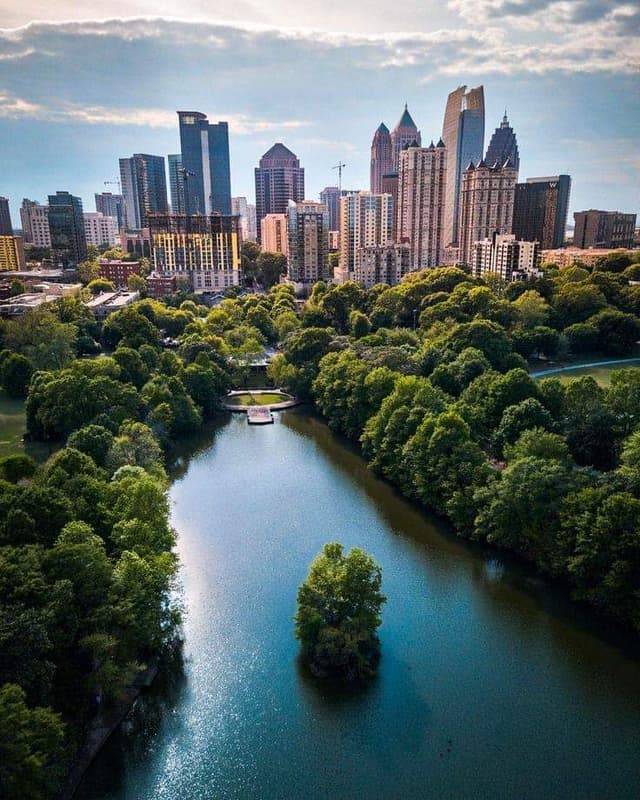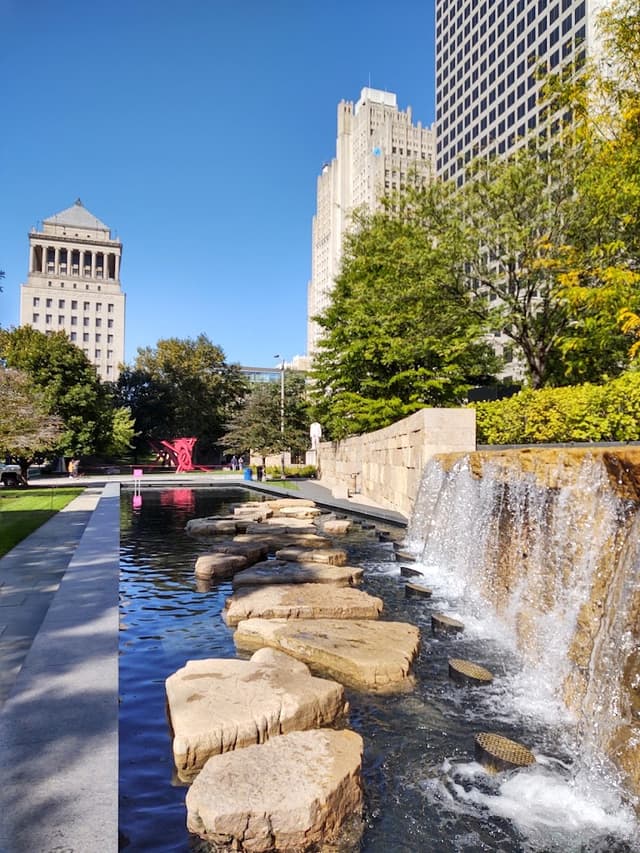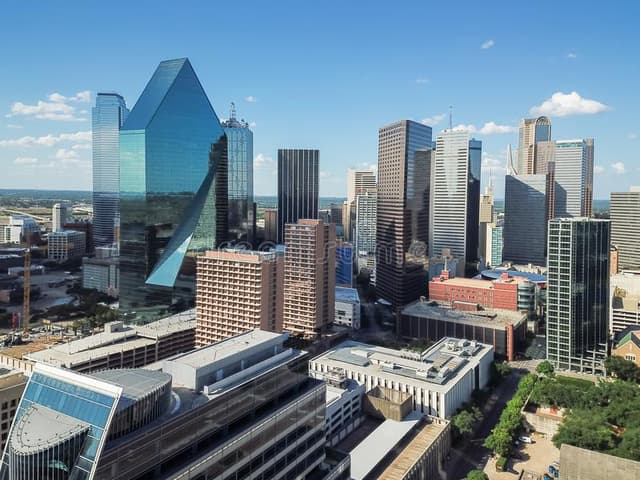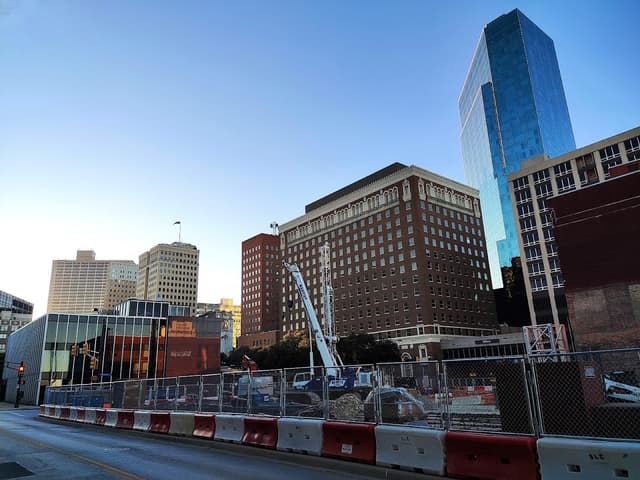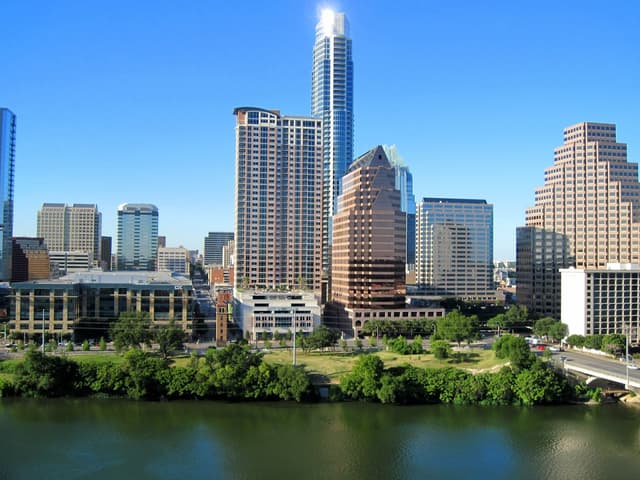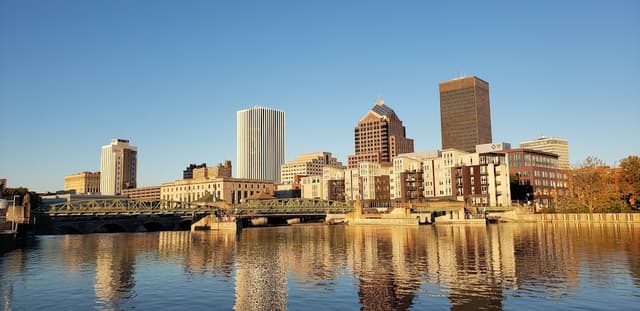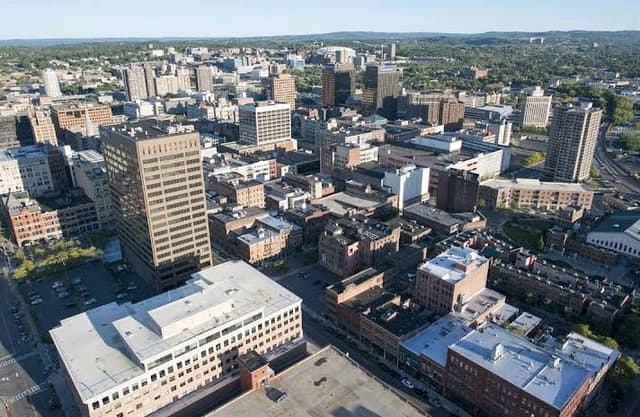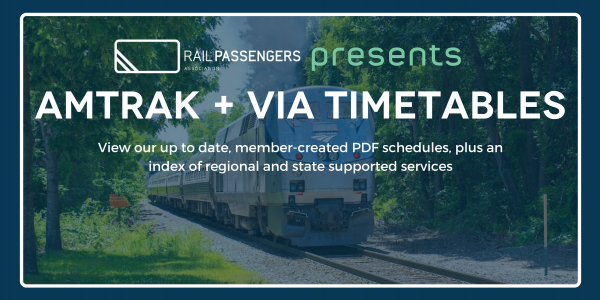Ever contemplated a new method of travel? A way to break up all of the traffic-filled roadtrips or miserable treks to the airport, only to wait 2-3 hours for a flight? Fed up with the same old highway views (or lack of views from the plane)?
If so, this guide is for you! From the very first time I boarded an Amtrak Long Distance (LD) train in 2016 in Oakland, CA, I was immediately overcome with excitement, which quickly morphed into a passion. I have yet to go on a trip and not catch myself in a trance staring out the window on multiple occasions, failing to read/watch all of the books/shows I thought I would need or having a deep conversation with a complete stranger in the observation car. These experiences are the reason why I write this guide, to share and hopefully inform prospective travelers.
If you are not familiar with Amtrak’s LD services, fear not! I intend to offer as much information about the train options, destinations, schedules and anything else I can think of to lead your potential adventure.
This is just part one of a three-part guide and will cover the intro as well as the first five long-distance trains (numerically). Be sure to check out the other two sections (below) as well as all my other work on Amtrak and budget-oriented traveling. If for some reason, I don’t cover something or you have questions, feel free to reach out!
Heading into the Eastern time zone for the first time in these guides, let’s jump right into part two. Three of the next five routes we will cover have a train originating and terminating in New York City each day, which is where we begin.
#19/20 Crescent
(New York-New Orleans)
The Crescent starts its 1,377-mile and roughly 31-hour journey in the Big Apple, departing out of Moynihan Train Hall at Pennsylvania Station.
New York
@mitchellmcavoy
New York City most certainly does not need an introduction. One of, if not the, most famous cities in the entire world, it is only fitting for it to be one of Amtrak’s major hubs, serving more than a hundred trains per day out of Pennsylvania Station & Moynihan Train Hall.
More than 1,300 trains and 600,000 people pass through the station every day via Amtrak as well as the subway and commuter rail services. Aside from the Acela, Northeast Regional, Empire Service and Keystone Service, which all see multiple departures per day, Amtrak runs 13 more trains out of the city. The majority of those trains originate in New York with their counterpart terminating there.
Penn Station & Moynihan Train Hall is located in midtown Manhattan within walking distance (or a short subway ride) to the Empire State Building, Grand Central Terminal, Madison Square Garden, Central Park and more.

Details
• Newark, NJ
• Trenton
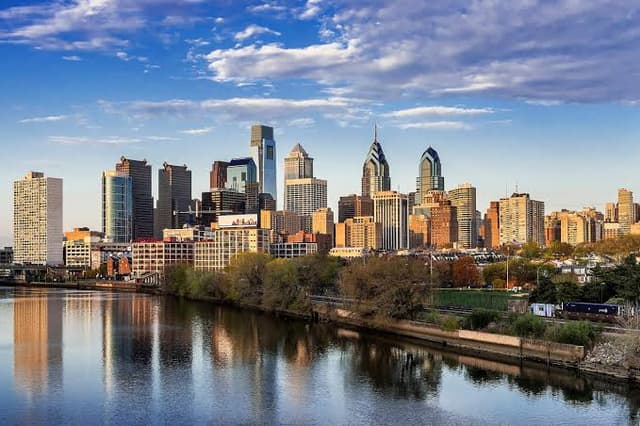
Philadelphia
@mitchellmcavoy
Almost every southbound train out of New York will travel Amtrak’s Northeast Corridor (NEC) down to Washington, D.C. before splitting off on different routes. The exceptions here are the Keystone Service and Pennsylvanian, which split off at Philadelphia and head west out of William H. Gray III 30th Street Station.
The former, built by the Pennsylvania Railroad and opened in 1933, maintains its rich history with its towering ceilings and columns. Sitting right up against the Schuylkill River, west of downtown Philadelphia, the station is located in the University City neighborhood within walking distance to Drexel University and the University of Pennsylvania.
It is about a mile walk from the station to the Philadelphia City Hall and City Center where you can find other attractions such as the Reading Terminal Market, JFK Plaza and the Franklin Institute. Independence Hall, the Liberty Bell and the Delaware River waterfront are 2+ miles away, however, the Southeastern Pennsylvania Transportation Authority (SEPTA) runs metro trains throughout the city as well as commuter rail on other lines.

Details
• Wilmington, DE
Baltimore
@mitchellmcavoy
Baltimore is the next major stop along the NEC with all trains alighting at Penn Station. The station, named for the railroad that built it, is located north of downtown, the Inner Harbor and Orioles Park at Camden Yards by about 1-2 miles. However, there is a connection to the Baltimore light rail system with a roughly quarter-mile walk at the Mt. Royal station. This line runs north-south and can bring you to multiple stops in the downtown area.
After departing Baltimore Penn Station, many Amtrak trains stop at BWI Airport (mostly Northeast Regional trains), however, for some odd reason the southbound Crescent does not (its northbound counterpart does, hence the oddity).

Details
• BWI Airport (northbound/train #20 ONLY)
Washington
@mitchellmcavoy
Wrapping up its trip along the NEC and marking the beginning of foreign railroad tracks, the Crescent generally makes an extended stop in Washington D.C. at Union Station.
The scheduled 27-minute stop in Washington allows for
the standard boarding/deboarding as well as luggage and more to take place. Washington is Amtrak’s second-busiest station across its entire network, so there is typically a large amount of people exchanging. Another reason for the extended stop is that Washington is the southern terminus of the NEC and thus electrified territory. Therefore, the train's electric locomotive is switched out for a diesel - or vice-a-versa - during this dwell time.
Passing through tunnels traveling south under the city: the Library of Congress, the U.S. Capitol Building and the Supreme Court of the United States, the Crescent then crosses the Potomac River into Virginia.

Details
• Alexandria, VA
• Manassas
• Culpeper
• Charlottesville
• Lynchburg
• Danville
• Greensboro, NC
• High Point
• Salisbury
Charlotte
@mitchellmcavoy
The Crescent’s stop in Charlotte is in the middle of the night, scheduled for 2:30 a.m. Currently, Amtrak trains stop at an outdated station about 1.5-2 miles from downtown, which is obviously less than ideal. Future plans (expected in 2026-27) call for a brand new intermodal hub in the heart of the city. Charlotte Gateway Station will be located right next to Truist Field (minor league baseball) and Bank of America Stadium (NFL’s Panthers).
Charlotte also serves Amtrak’s Piedmont (multiple trips between Charlotte-Raleigh daily) and the Carolinian, which runs once daily to/from New York.

Details
Scheduled for a 25-minute stop in Charlotte, the Crescent then continues on its way south and west.
• Gastonia
• Spartansburg, SC
• Greenville
• Clemson
• Toccoa, GA
• Gainesville
Atlanta
@mitchellmcavoy
The last stop for the Crescent in the eastern time zone, the train is scheduled to arrive in the late morning and alight at Peachtree Station. Atlanta’s stop - located near the meet of I-75 and I-85 - is similar to Charlotte in the sense that it is located several miles from downtown, although it does have a regional transit connection via bus.
Peachtree Station - built in 1918 - has been the subject of talks regarding a new stop in Atlanta. Discussions have proposed using a former railroad station, which would be almost directly in the heart of downtown. Unlike Charlotte, there are no immediately plans for replacement. That said, the current station building does have a waiting room with large benches as well as checked bag service.

Details
• Anniston, AL
• Birmingham
• Tuscaloosa
• Meridian, MS
• Laurel
• Hattiesburg
• Picayune
• Slidell, LA
New Orleans
@mitchellmcavoy
Scheduled for arrival in the mid-to-late evening, the Crescent terminates at the New Orleans Union Passenger Terminal. NOUPT is located right next door to the homes of the Pelicans (NBA) and Saints (NFL) and about a 15-20 minute walk to Bourbon Street.
Walk?! Fret not, there are connections to the New Orleans Streetcar system near the station.
Flying into Louis Armstrong International Airport? There is public transit from the airport to the train station, but plan for anywhere between 30 mins and an hour to make the trip.
NOUPT also serves Amtrak’s City of New Orleans (to Chicago via Jackson, MS & Memphis) and Sunset Limited (to Los Angeles via Houston & San Antonio) routes as well as the Mardi Gras (to Mobile - coming soon!).

Details
Route Overview (courtesy of Wikipedia)
See the full Crescent schedule by clicking and scrolling below. Thanks to the Rail Passengers Association for providing the schedule since Amtrak seems to have gone away from publishing timetables. While it is a great guideline, always be sure to confirm times with Amtrak prior to making plans.
#21/22 Texas Eagle
(Chicago-San Antonio)
• Chicago, IL
One thing to be aware of, trains #21/#22 and #421/#422 are the same train. The latter set refers to when the Texas Eagle connects/separates to/from the tri-weekly Sunset Limited in San Antonio becoming #1/#421 / #2/#422. The entire trip from Chicago through to Los Angeles via San Antonio is the longest in distance in the Amtrak system at more than 2,700 miles.
• Joliet
• Pontiac
• Bloomington-Normal
• Lincoln
• Springfield
• Carlinville
• Alton
St. Louis
@mitchellmcavoy
St. Louis is one of four major cities (including Chicago) that the Texas Eagle serves on its way to San Antonio.
The city's stop occurs at the Gateway Transportation Center in the Downtown West section of St. Louis. It is a short walk to St. Louis Union Station, which was the former home of all trains in the city, but after its closure in the 70s was renovated into an entertainment space. Gateway Station is also about a mile from Busch Stadium (St. Louis Cardinals) and connects to the MetroLink light rail’s red and blue at the Civic Center Station right next door.
St. Louis sees 14 Amtrak trains per day with connections to the Lincoln Service (to/from Chicago with some trips extending to Kansas City) and the River Runner Service (St. Louis-Kansas City).

Details
• Arcadia, MO
• Poplar Bluff
• Walnut Ridge, AR
• Little Rock
Continuing south and west, the Texas Eagle crosses into its namesake state around 6:45 a.m., making its first stop at Marshall at 7:40 a.m. #21 takes a hard west turn after leaving the former stop en route to Dallas, alighting in Longview and Mineola along the way.
Dallas
@mitchellmcavoy
Eddie Bernice Johnson Union Station or simply Dallas Union Station is located on the west end of the city’s downtown historic district and is listed on the National Register of Historic Places. The station has five tracks with two more operating as through tracks for freight operations. If you hang around for even a few minutes, you can expect an intermodal train to come roaring by. On the station tracks, there are connections to the Red and Blue Lines of Dallas Area Rapid Transit (DART) as well as Trinity Railway Express - a commuter rail line - with service to Fort Worth. Amtrak typically boards on the farthest track from the station and all track crossings are at-grade, so be alert!
The Texas Eagle arrives at 11:30 a.m. on its southbound run and at 3:20 p.m. on its northbound. During each stop, the train is scheduled to be in the station for 20 minutes (if on time).

Details
Fort Worth
@mitchellmcavoy
Just west of Dallas and the very next stop on the Texas Eagle is Fort Worth’s Central Station. Although there is no stop, the train’s route between the cities traverses through Arlington, offering passengers views of Six Flags, AT&T Stadium (Dallas Cowboys) and Globe Life Field (Texas Rangers).
Fort Worth is a service stop for Amtrak as well as a crew change point, which means the Texas Eagle is scheduled for a 45-minute stop on the southbound trip. The intermodal station has connections to Greyhound as well as local buses in addition to Trinity Railway Express (commuter trains to Dallas) and TEXRail (hybrid commuter/light rail train to DFW International Airport).
Central Station is located on the eastern edge of downtown, close to Sundance Square and other entertainment. Inside the building, there a medium-sized waiting room, a ticket window, vending machines and a Subway.

Details
Following extended stops in Dallas and Fort Worth, the Texas Eagle continues south toward Texas’ capital city. On the way, it makes stops in Cleburne, McGregor (closest station to Waco), Temple and Taylor.
Austin
@mitchellmcavoy
Austin’s station is located about a mile from the heart of downtown and north of Ladybird Park on the Colorado River. The station is a small brick building with a waiting room, ticket office and restrooms.
Arrival in Texas’ capital city is scheduled for dinner time on the southbound trip, arriving just after 6:15 p.m. while on the northbound, it is a late breakfast arrival around 9:20 a.m.

Details
Austin begins the final stretch for the Texas Eagle when it runs daily as it is just about two hours after departure to the trains’ final destination. Stopping in between at San Marcos, the Eagle continues to San Antonio where it connects with the Sunset Limited (see part one) on a tri-weekly basis.
Although scheduled for almost 2.5 hours between San Marcos and San Antonio, if the Eagle is running on time and freight traffic into the latter is minimal, the train can make it in about 45 minutes early.
Texas Eagle & Sunset Limited combined route overview (Courtesy of Wikipedia)
See the full Texas Eagle schedule by clicking and scrolling below. Thanks to the Rail Passengers Association for providing the schedule since Amtrak seems to have gone away from publishing timetables. While it is a great guideline, always be sure to confirm times with Amtrak prior to making plans.
#29/30 Capitol Limited
(Chicago - Washington, D.C.)
One of Amtrak’s shortest long-distance routes, the Capitol Limited’s 764-mile trek traverses six states en route to Washington D.C.
Beginning in Chicago, the Capitol Limited immediately cuts southeast toward Hammond, Indiana and the historic New York Central Water Level Route. Departure from the Windy City is just before 7 p.m. CT, which means the majority of the trip is through the night depending on the season.
Passing into the eastern time zone shortly after leaving Chicago, the Capitol Limited makes stops in South Bend, Elkhart, Waterloo (Indiana), Toledo, Sandusky and Elyria (Ohio) on the way to one of Ohio’s biggest cities.
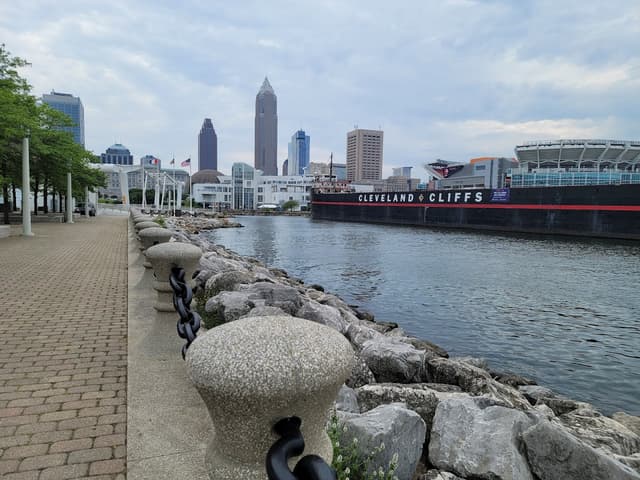
Cleveland
@mitchellmcavoy
The Capitol Limited arrives into Cleveland at 1:45 a.m. ET while its counterpart heads west through the stop just before 3 a.m.
Amtrak’s stop in Cleveland is at the thoroughly depressing Lakefront Station, which is tucked into a corner in the shadow of the Cleveland Browns’ stadium. It is a largely underserving station for a large city, but has the basics of a waiting room, checked baggage and restrooms. It is only open during the middle of the night when trains arrive and passengers have to cross the local public transit’s RTA Rapid tracks to get to the building.
As the former suggests, there is a direct connection at a station walking distance from Lakefront to the RTA Rapid, however, those trains do not run while Amtrak drops off. With all of this being said, Lakefront is actually a fairly easy and safe walk to hotels with several within 10 minutes. It is also walking distance to waterfront dining and the Rock & Roll Hall of Fame.
The staff at the station are also very nice and helpful. I had a situation with a lost checked bag. The station agent correctly assumed that it was put on the Lake Shore Limited instead of the Capitol Limited. When it, thankfully, arrived a few hours later, the station agent called me immediately.

Details
Almost immediately following departure from Cleveland, the tracks fork and the Capitol Limited veers right and south toward its next station of Alliance, OH. The Lake Shore Limited (which will come later) stays straight at the split toward Erie, PA and Buffalo, NY.
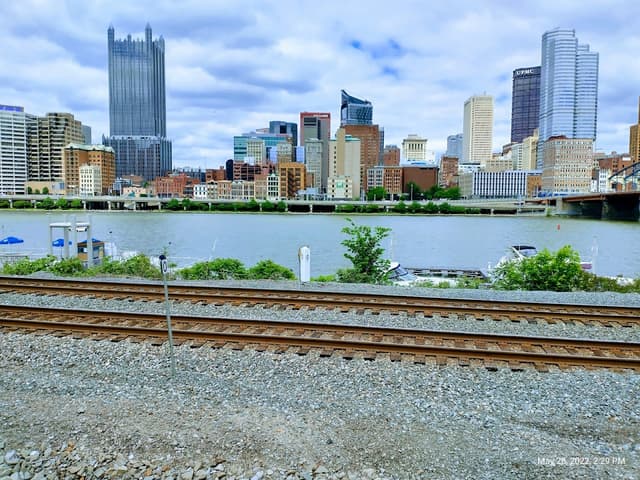
Pittsburgh
@mitchellmcavoy
Located in the downtown urban center of Pittsburgh, Penn Station (also called Union Station) is a reminder of the former glory of the railroads and the Pennsylvania Railroad, in particular.
The eastbound Capitol Limited is scheduled to arrive at 5:05 a.m. and has a dwell time of 15 minutes while its crew changes and the normal station work is done. Amtrak has a scheduled connection at the station to the Pennsylvanian (Pittsburgh-NYC via Philadelphia), which departs at 7:30 a.m. In reverse, the westbound Pennsylvanian arrives around 8 p.m. for an 11:59 p.m. departure on the Capitol Limited.
The station itself doesn’t have much of anything for food options aside from a vending machine. On top of that, its location is surrounded by office buildings and highways, so the restaurants are scarce.
Despite the station, Pittsburgh is a fantastic city to spend a few days and has a rich culture. The homes of the Pittsburgh Steelers and Pittsburgh Pirates (often rated the best baseball stadium in the entire country) are across the Allegheny River. Meanwhile, the nightlife, historic districts and Fort Duquesne are to the west of the station.

Details
After departure from Pittsburgh, the train takes a winding, curving route southeast toward Maryland, stopping in Connellsville, PA along the way. Then riding the state line between Maryland and West Virginia for a good stretch, making stops in Cumberland (MD) and Martinsburg (WV), it alights in Harpers Ferry, WV.
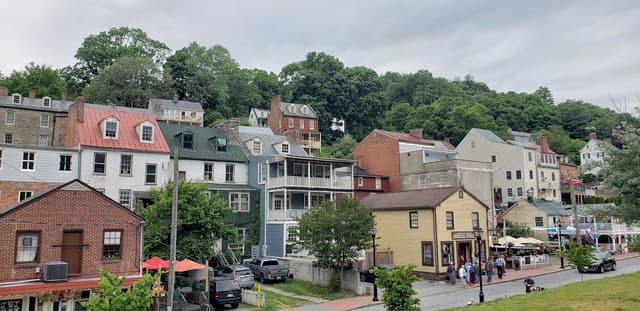
Harpers Ferry
@mitchellmcavoy
About 1.5 hours outside of Washington, historic Harpers Ferry is an excellent escape from the city and whisks you back in time. The station is located perfectly on the edge of the town, making almost everything walking distance. The town is most notable for John Brown's - an abolitionist - efforts and being a crucial momentum battleground during the American Civil War. Harpers Ferry National Historical Park operated by the National Park Service is located just about two miles from the station.
Harpers Ferry is perfect for a day trip, if the trains are running on time. By train, it is only possible, coming from the west, as the train arrives at 11:31 a.m. and the westbound doesn’t come through until later in the afternoon/evening at 5:16 p.m. If you are coming from Washington D.C., wishing to do a day-trip, you would have to take a bus for the trip out before returning on a MARC Commuter train later in the evening as there are no early morning trains out of DC in this direction.
That being said, there are hotel options in Harpers Ferry, as well, if you’d rather turn it into a weekend trip. There are at least two options within the immediate vicinity of the station as well as others within a mile’s walk.

Details
After departing Harpers Ferry and crossing the Potomac River, the Capitol Limited hurtles toward Washington D.C. with only a quick stop at Rockville, MD between. Arrival in the nation’s capital is just after 1 p.m. ET and possibly earlier, if the trains are running smoothly.
Capitol Limited route overview
See the full Capitol Limited schedule by clicking and scrolling below. Thanks to the Rail Passengers Association for providing the schedule since Amtrak seems to have gone away from publishing timetables. While it is a great guideline, always be sure to confirm times with Amtrak prior to making plans.
#48/49 Lakeshore Limited
(Chicago - New York)
#448/449 Lakeshore Limited
(Chicago - Boston)
Similar to the Empire Builder in Spokane...
Ever contemplated a new method of travel? A way to break up all of the traffic-filled roadtrips or miserable treks to the airport, only to wait 2-3 hours for a flight? Fed up with the same old highway views (or lack of views from the plane)?
If so, this guide is for you! From the very first time I boarded an Amtrak Long Distance (LD) train in 2016 in Oakland, CA, I was immediately overcome with excitement, which quickly morphed into a passion. I have yet to go on a trip and not catch myself in a trance staring out the window on multiple occasions, failing to read/watch all of the books/shows I thought I would need or having a deep conversation with a complete stranger in the observation car. These experiences are the reason why I write this guide, to share and hopefully inform prospective travelers.
If you are not familiar with Amtrak’s LD services, fear not! I intend to offer as much information about the train options, destinations, schedules and anything else I can think of to lead your potential adventure.
This is just part one of a three-part guide and will cover the intro as well as the first five long-distance trains (numerically). Be sure to check out the other two sections (below) as well as all my other work on Amtrak and budget-oriented traveling. If for some reason, I don’t cover something or you have questions, feel free to reach out!
…the Lake Shore Limited also runs in two separate sections between Albany, N.Y. and Boston or New York City and vice-a-versa.
Depending on where you look, you may notice that the entirety of the train between Chicago and New York is referred to as trains 48/49 and the numbers 448/449 won’t appear unless the Boston-Albany segment is active. It is also possible to see 48/448 listed as the train number or the two showing as separate trains; as long as your origin and destination are correct, you will be placed into the correct part of the train no matter which one you choose. If you want to be doubly certain, reach out to the reservations desk or confirm with a conductor when on-board.
The Lake Shore Limited departs Chicago at 9:30 p.m. CT and follows the same New York Central Water Level Route tracks all the way to Cleveland before splitting off (see above). After departing the home of the Rock & Roll Hall of Fame at 5:50 a.m., the train heads north and east along Lake Erie, passing through the “panhandle” of Pennsylvania and stopping in the city of Erie.
Shortly after departing Erie, the train enters into New York and continues along the water through the small downs of Dunkirk and Silver Creek on the way to its stop in Buffalo.

Buffalo
@mitchellmcavoy
Depew is one of two stations located in the greater Buffalo area, but the only one served by the Lake Shore Limited and about 10 miles from downtown. Unfortunately, the junction of the tracks from the Lake Shore and Rochester subdivisions are east of the city and therefore so is the closest station.
Being that it is only about a 15-minute drive to the heart of the city, getting an Uber or Lyft is the best choice. There are also public transit options, but it will take wayyy longer. Another possibility is to connect to Amtrak’s Empire Service, which can get you to Buffalo-Exchange Street Station that is closer to downtown and has connections to Metro Rail - unfortunately, this will require a minimum six-hour wait if the train is on-time.
Although this post isn’t about Niagara Falls, if you are willing to wait for the Empire Service or take an Uber/Lyft to Exchange Street Station, you can take the train another 40 minutes up to the world-famous falls. The station is about two miles from the state park, although a majority of the walk is along the Niagara Greenway Trail/Whirlpool Street, which provides views of the Niagara River.

Details
Rochester
@mitchellmcavoy
The next stop on the Lake Shore Limited is in Rochester - one of central New York’s biggest cities. Louise M. Slaughter station, the third on the site in the city, was opened in 2017 and is located just a few blocks north of downtown.
The LSL arrives in the city at 10 a.m., which allows for spending the entire day in the city, if desired. Only about a 10-minute walk from the station are the High Falls, a Rochester highlight.
Continuing from the Buffalo excerpt, if desired, one could ride the train to Rochester, spend the day and catch one of three return westbound options to go back to Buffalo (Exchange St) starting at 2:13 p.m.

Details
Syracuse
@mitchellmcavoy
Continuing in the pattern for the Lake Shore Limited, its very next stop is at the William F. Walsh Regional Transportation Center or the RTC as it is locally known. The run from Rochester to Syracuse is an express run, which takes about 1 hr 20 mins.
The station is located northwest of downtown, although it is about a 10-15 minute walk to Destiny USA - one of the largest shopping malls in the country (complete with a movie theater among other attractions) - and NBT Bank Stadium - home of the Syracuse Mets (AAA affiliate of the New York Mets). It is also located almost on the same plot of land as the Central New York Regional Market.
At the RTC, passengers can transfer to local bus service provided by Centro as well as intercity busses via Greyhound, Trailways and Megabus.

Details
Departing Syracuse at 11:42 a.m., the Lake Shore continues east bypassing the next stop of Rome (served by Empire Service/Maple Leaf trains) before alighting at Utica’s Union Station where seasonal connections can be made to the scenic Adirondack Railroad.
Following Utica, the train again bypasses the next station on the line in Amsterdam before making a stop in Schenectady. Connections can be made at Schenectady to Amtrak’s Ethan Allen Express (NY-Burlington, VT) and the Adirondack (NY-Montreal).
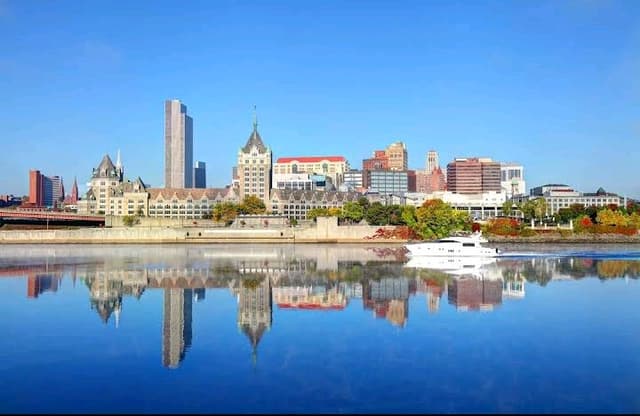
Albany
@mitchellmcavoy
Shortly after departure from Schenectady - about 18 miles and 25-30 minutes - the Lake Shore Limited makes a stop at Albany-Rensselaer, which is its final (or first, if traveling from New York/Boston) station as a complete train.
If the train arrives on time into Albany-Rensselaer (2:53 p.m. ET), NEW YORK passengers have over an hour to get out and stretch their legs or head up into the station. During this time, the train is separated into its New York and Boston sections and the locomotives are swapped, which is a fascinating sight in itself. BOSTON passengers ONLY have about 30 minutes.
Up in the station building, there is a cafe, convenience store, post office, ticket desks as well as restrooms. If you choose to walk outside the station, keep in mind that it is actually located in the town of Rensselaer and still across the river about 1.5 miles from Albany, so you won’t be strolling around a downtown. There are a few large parking lots on site, however, if you desire to just do a couple of loops. Lastly, if you decide to leave the train, bring your ticket and be very aware of the time. As of this writing, departure for the NY section is 4:10 p.m. ET, while Boston is 3:27 p.m. ET. If the train is running late, be sure to ask the conductor what time you should be back to the train because they will likely try to expedite the process and they can/will leave without you.
Future Amtrak Airo train sets are expected to eliminate this timely layover in Albany due to diesel/electric dual-mode locomotives. Currently, any trains traveling in/out of New York’s Penn Station must have an electric engine, while anything north of Albany is required to have diesel, so the locomotives are swapped at this station.
Lastly, connections can be made to local (CDTA) as well as intercity bus service (Megabus, Greyhound and Vermont Translines) at the station.

Details
Following departure from Albany, the Boston section (1,017 miles) continues south and east through the Berkshire Mountains with a stop in Pittsfield. Then continuing further south, train 448 alights in Springfield. After a scheduled 15-minute stop in the city, the Lake Shore begins the final stretch of the journey into Boston’s South Station, stopping at Worcester, Framingham and Boston Back Bay (departure only) prior, arriving at its final destination at 8:32 p.m.
The New York segment (959 miles) continues south as well, taking a more direct route along the Hudson with stops at Rhinecliff, Poughkeepsie and Croton-Harmon (departure only) in advance of arrival at Penn Station.
Lake Shore Limited Route Overview
See the full Lake Shore Limited schedule by clicking and scrolling below. Thanks to the Rail Passengers Association for providing the schedule since Amtrak seems to have gone away from publishing timetables. While it is a great guideline, always be sure to confirm times with Amtrak prior to making plans.
#50/#51 Cardinal
(Chicago - New York via Indianapolis, Cincinnati & Washington, D.C.)
*Operates tri-weekly; departs Chicago on Tues/Thurs/Sat and New York on Wed/Fri/Sun*
The last train for part two of this guide is the tri-weekly Cardinal, operating from Chicago, south through Indiana, southern Ohio/northern Kentucky, West Virginia, Virginia and Washington D.C. where it joins the Northeast Corridor for the final stretch to New York City. Although as of this writing (Feb. 2024) the train is still triweekly, it is under study along with the Sunset Limited to receive daily service…hopefully in the not too distant future.
Fun fact: The 1,146-mile long Cardinal is named such because each of the six states it passes through on the way to connecting with the NEC - Illinois, Indiana, Ohio, Kentucky, West Virginia and Virginia - all have the Cardinal as their state birds.
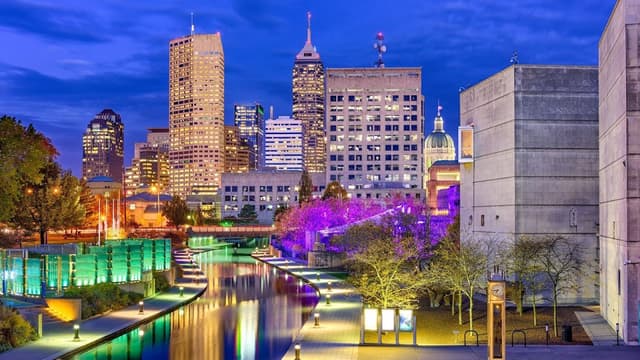
Indianapolis
@mitchellmcavoy
Departing Chicago in the early evening, the Cardinal takes the sharpest south route out of the Windy City, almost immediately cutting into Indiana. Dyer, Rensselaer, Lafayette and Crawfordsville are all quick stops on the way to Indianapolis where the train makes a scheduled 26-minute stop for crew change and servicing.
Arriving just before midnight (ET), the Cardinal provides the only Amtrak service to the city of Indianapolis. The former Hoosier State was an Amtrak train that ran between Chicago-Indianapolis on the four days a week that the Cardinal didn’t, however, the government of the state decided to discontinue funding the service in 2019.
The station is located southeast of conventional downtown, but is sandwiched between Lucas Oil Stadium (NFL’s Colts) and Gainbridge Fieldhouse (NBA’s Pacers). It is surrounded by a number of lodging options, which works well for the scheduled arrival time. However, per the Google Reviews for the station, it doesn’t appear to be the safest for solo travelers with many citing lack of security or assistance in the actual station building. If traveling to the city, it may be best to schedule a pickup or have someone meeting you.

Details
Cincinnati
@mitchellmcavoy
Only two stops after Indianapolis is the Cardinal’s only stop in Ohio, at the historic Cincinnati Union Terminal. Unfortunately, both trains 50 and 51 pass through the Queen City in the middle of the night between 1:30 am and 3:30 a.m.
The station sits northwest of central downtown in the Queensgate neighborhood of the city. While some still exist across the country, there are really only a few great historic stations remaining and CUT is without a doubt one of them. The art deco structure is breathtaking and picturesque. If you visit in the summer months, you can expect a grand display of fountains and flowers in front.
Cincinnati Union Terminal is slightly isolated so it is a little bit of a distance to the nearest lodging and food options. Passengers should be prepared to have someone meet them or look for a ride share when they arrive.

Details
Following departure from Cincinnati, the Cardinal makes use of the number three quite often. First, it makes a trio of stops in northern Kentucky, just across the Ohio River - Maysville, South Shore and Ashland through the night. Crossing into West Virginia, the Cardinal begins its march toward the real highlight of the trip, stopping in Huntington, Charleston and Montgomery.
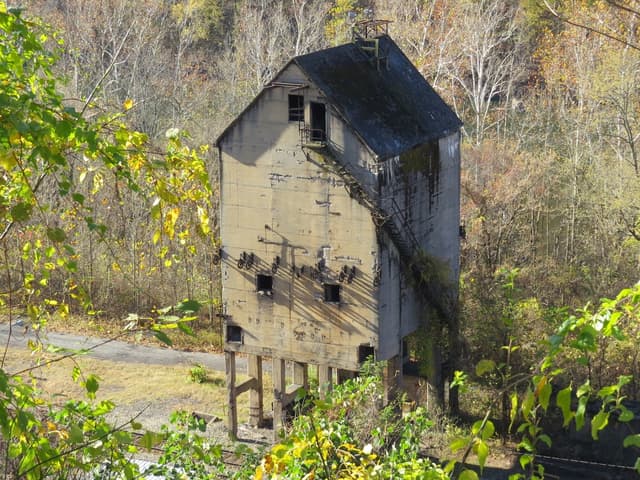
Thurmond
@mitchellmcavoy
It is a bit ironic to list Thurmond as a highlight of the trip as it is in the top-3 fewest utilized Amtrak stops in the country almost every year. However, the reason for it being recognized is not to get off and expect some grand town (as can be seen in the pictures, there isn’t), but to be prepared for scenery. Again, unless Thurmond is your final stop or you have someone meeting you, I DO NOT recommend exiting the train here, but I do recommend setting an alarm as a reminder of the beautiful scenery, particularly in the spring and fall.
Thurmond is the first Amtrak stop (EB) in the New River Gorge National Park & Preserve and the first after the beginning of the trip along New River, which spans for roughly the next 35 track miles. Shortly before stopping at the station, the train passes beneath the New River Gorge Bridge and the station building has a visitor center.
As the train continues south along New River, it passes through Prince and Hinton. The latter is the best option of the three along the river to spend a night as there is more of a town and a lodging option.

Details
A departure from New River follows after leaving Hinton as the train begins an easterly direction toward Alderson and then White Sulphur Springs.
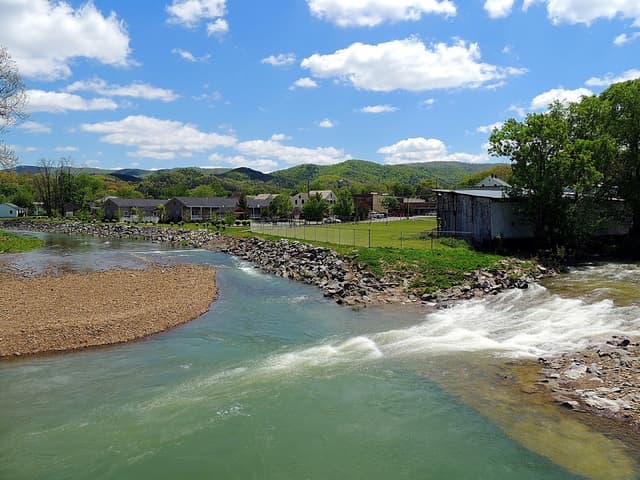
White Sulphur Springs
@mitchellmcavoy
Ambitious travelers through the New River Gorge may opt to spend a night at the lone lodging option in Hinton, however, White Sulphur Springs is the more realistic option for most. The town is home to fewer than 3,000 people (2020) permanently, however, sees an uptick from visitors to the Greenbrier Resort Hotel, which is almost directly across from the Amtrak stop.
Although the Greenbrier is best known for being a first-class, five-star resort hotel, there is also a ton of history involved as it served as a hospital during World War II. The station building, which no longer serves as such, is a Christmas store and gift shop; it also has a candy cane paint job.
While WSS and the Greenbrier aren’t necessarily in the heart of the New River Gorge National Preserve, it is a fantastic place to spend a few days and maybe more. From yoga classes to bike rentals, aerial adventure courses, carriage rides and even a tour of a Cold War fallout bunker, the resort has it all.

Details
Shortly after serving White Sulphur Springs, the Cardinals enters into Virginia and makes a stop at Clifton Forge and Staunton before rejoining the Northeast Regional line at Charlottesville. The latter serves as a transfer point to the Crescent or the Northeast Regional trains toward Lynchburg and Roanoke.
A few more stops follow in Virginia - Culpeper, Manassas and Alexandria - before the train joins up with the Northeast Corridor in Washington D.C. After this point, the Cardinal makes the normal stops for a long-distance train running along the NEC: Baltimore, Wilmington, Philadelphia, Trenton, NJ, Newark, NJ and last New York City at 10:23 p.m.
FYI - One this to be aware of: beginning in Alexandria, passengers may not board the east/northbound train as it only allows departures. This allows for the train to potentially make up time or arrive/leave early at any of these destinations.
Cardinal Route Overview
See the full Cardinal schedule by clicking and scrolling below. Thanks to the Rail Passengers Association for providing the schedule since Amtrak seems to have gone away from publishing timetables. While it is a great guideline, always be sure to confirm times with Amtrak prior to making plans.
This is Part 2 of a three-part series about Amtrak’s long-distance trains. Check out the introduction and Part 1 here:
Ever contemplated a new method of travel? A way to break up all of the traffic-filled roadtrips or miserable treks to the airport, only to wait 2-3 hours for a flight? Fed up with the same old highway views (or lack of views from the plane)?
If so, this guide is for you! From the very first time I boarded an Amtrak Long Distance (LD) train in 2016 in Oakland, CA, I was immediately overcome with excitement, which quickly morphed into a passion. I have yet to go on a trip and not catch myself in a trance staring out the window on multiple occasions, failing to read/watch all of the books/shows I thought I would need or having a deep conversation with a complete stranger in the observation car. These experiences are the reason why I write this guide, to share and hopefully inform prospective travelers.
If you are not familiar with Amtrak’s LD services, fear not! I intend to offer as much information about the train options, destinations, schedules and anything else I can think of to lead your potential adventure.
This is just part one of a three-part guide and will cover the intro as well as the first five long-distance trains (numerically). Be sure to check out the other two sections (below) as well as all my other work on Amtrak and budget-oriented traveling. If for some reason, I don’t cover something or you have questions, feel free to reach out!
If you found this guide or anything in it helpful, I humbly ask that you consider scrolling down and leaving a tip. This will help to keep these guides, itineraries and any other work either completely free or at a reduced price. If you are unable to, I totally understand and ask to you save it to your profile and share it with as many people as you can. I greatly appreciate it and wish you safe travels!
Questions? Inquiries? Suggestions? Reach me - Mitchell - at orientbayadventures@gmail.com
* * *
